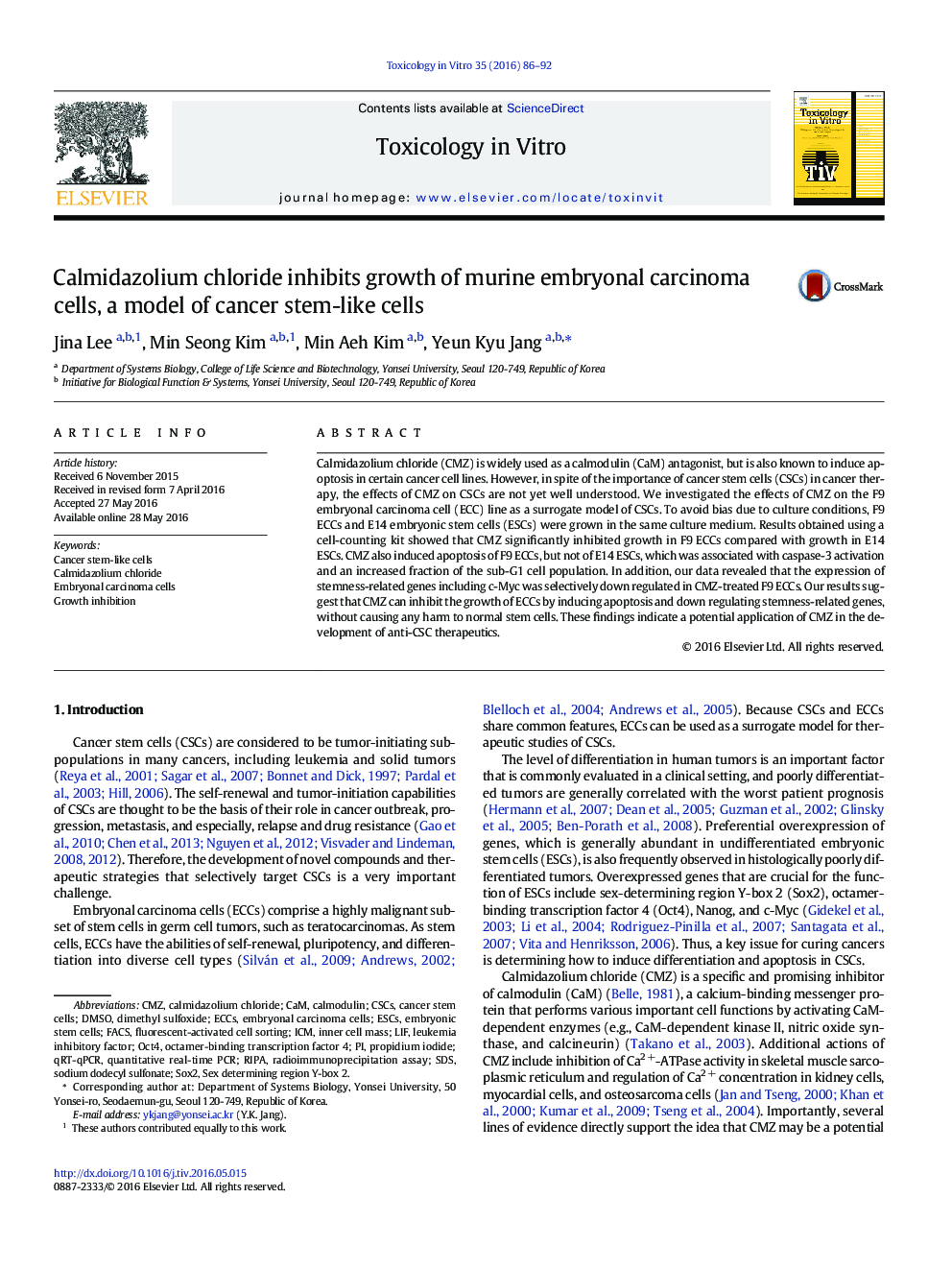| Article ID | Journal | Published Year | Pages | File Type |
|---|---|---|---|---|
| 5861044 | Toxicology in Vitro | 2016 | 7 Pages |
Abstract
Calmidazolium chloride (CMZ) is widely used as a calmodulin (CaM) antagonist, but is also known to induce apoptosis in certain cancer cell lines. However, in spite of the importance of cancer stem cells (CSCs) in cancer therapy, the effects of CMZ on CSCs are not yet well understood. We investigated the effects of CMZ on the F9 embryonal carcinoma cell (ECC) line as a surrogate model of CSCs. To avoid bias due to culture conditions, F9 ECCs and E14 embryonic stem cells (ESCs) were grown in the same culture medium. Results obtained using a cell-counting kit showed that CMZ significantly inhibited growth in F9 ECCs compared with growth in E14 ESCs. CMZ also induced apoptosis of F9 ECCs, but not of E14 ESCs, which was associated with caspase-3 activation and an increased fraction of the sub-G1 cell population. In addition, our data revealed that the expression of stemness-related genes including c-Myc was selectively down regulated in CMZ-treated F9 ECCs. Our results suggest that CMZ can inhibit the growth of ECCs by inducing apoptosis and down regulating stemness-related genes, without causing any harm to normal stem cells. These findings indicate a potential application of CMZ in the development of anti-CSC therapeutics.
Keywords
FACSLIFECCSESCsCMZICMSox2Oct4RIPACSCsSDSDMSOInner cell massfluorescent-activated cell sortingDimethyl sulfoxideCAMsodium dodecyl sulfonatecancer stem-like cellsEmbryonic stem cellsEmbryonal carcinoma cellsCancer stem cellsradioimmunoprecipitation assayleukemia inhibitory factoroctamer-binding transcription factor 4Sex determining region Y-box 2growth inhibitionquantitative real-time PCRPropidium iodideCalmodulin
Related Topics
Life Sciences
Environmental Science
Health, Toxicology and Mutagenesis
Authors
Jina Lee, Min Seong Kim, Min Aeh Kim, Yeun Kyu Jang,
